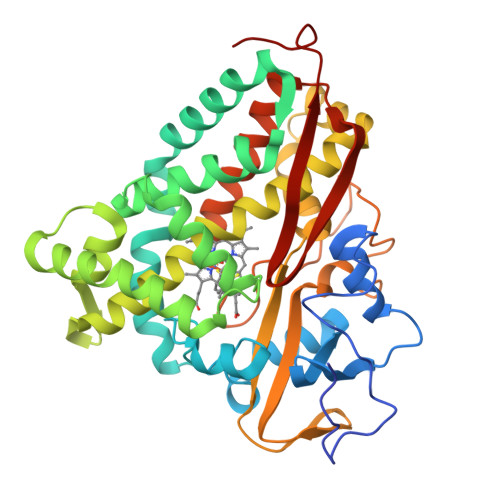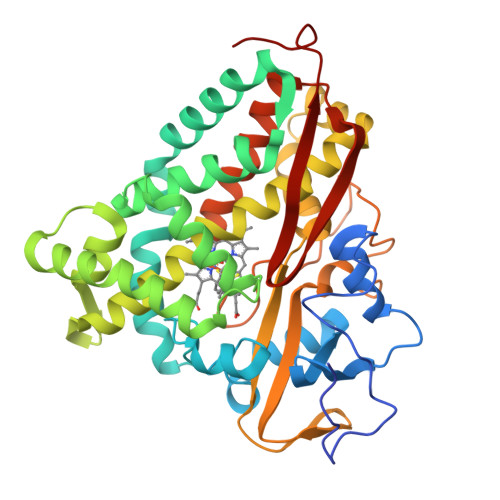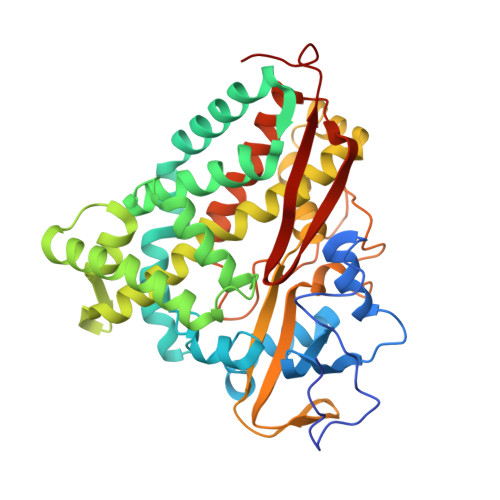Crystal structures of cytochrome P-450CAM complexed with camphane, thiocamphor, and adamantane: factors controlling P-450 substrate hydroxylation.
Raag, R., Poulos, T.L.(1991) Biochemistry 30: 2674-2684
- PubMed: 2001355
- DOI: https://doi.org/10.1021/bi00224a016
- Primary Citation of Related Structures:
4CPP, 6CPP, 8CPP - PubMed Abstract:
X-ray crystal structures have been determined for complexes of cytochrome P-450CAM with the substrates camphane, adamantane, and thiocamphor. Unlike the natural substrate camphor, which hydrogen bonds to Tyr96 and is metabolized to a single product, camphane, adamantane and thiocamphor do not hydrogen bond to the enzyme and all are hydroxylated at multiple positions. Evidently the lack of a substrate-enzyme hydrogen bond allows substrates greater mobility in the active site, explaining this lower regiospecificity of metabolism as well as the inability of these substrates to displace the distal ligand to the heme iron. Tyr96 is a ligand, via its carbonyl oxygen atom, to a cation that is thought to stabilize the camphor-P-450CAM complex [Poulos, T. L., Finzel, B. C., & Howard, A. J. (1987) J. Mol. Biol. 195, 687-700]. The occupancy and temperature factor of the cationic site are lower and higher, respectively, in the presence of the non-hydrogen-bonding substrates investigated here than in the presence of camphor, underscoring the relationship between cation and substrate binding. Thiocamphor gave the most unexpected orientation in the active site of any of the substrates we have investigated to date. The orientation of thiocamphor is quite different from that of camphor. That is, carbons 5 and 6, at which thiocamphor is primarily hydroxylated [Atkins, W. M., & Sligar, S. G. (1988) J. Biol. Chem. 263, 18842-18849], are positioned near Tyr96 rather than near the heme iron. Therefore, the crystallographically observed thiocamphor-P-450CAM structure may correspond to a nonproductive complex. Disordered solvent has been identified in the active site in the presence of uncoupling substrates that channel reducing equivalents away from substrate hydroxylation toward hydrogen peroxide and/or "excess" water production. A buried solvent molecule has also been identified, which may promote uncoupling by moving from an internal location to the active site in the presence of highly mobile substrates.
Organizational Affiliation:
Center for Advanced Research in Biotechnology of the Maryland Biotechnology Institute, University of Maryland, Rockville 20850.




















